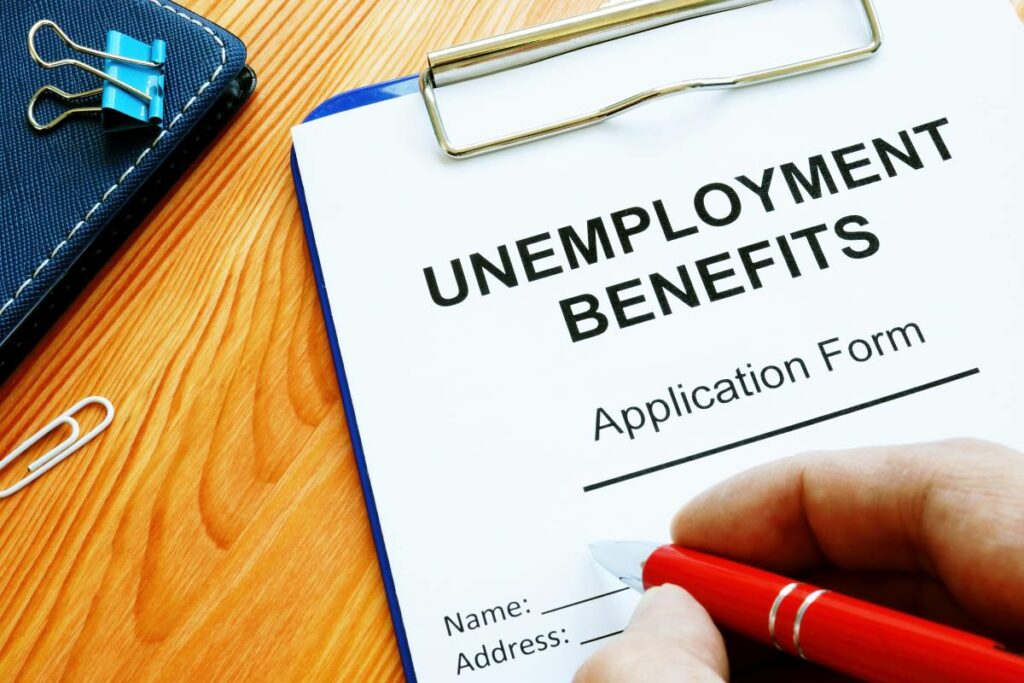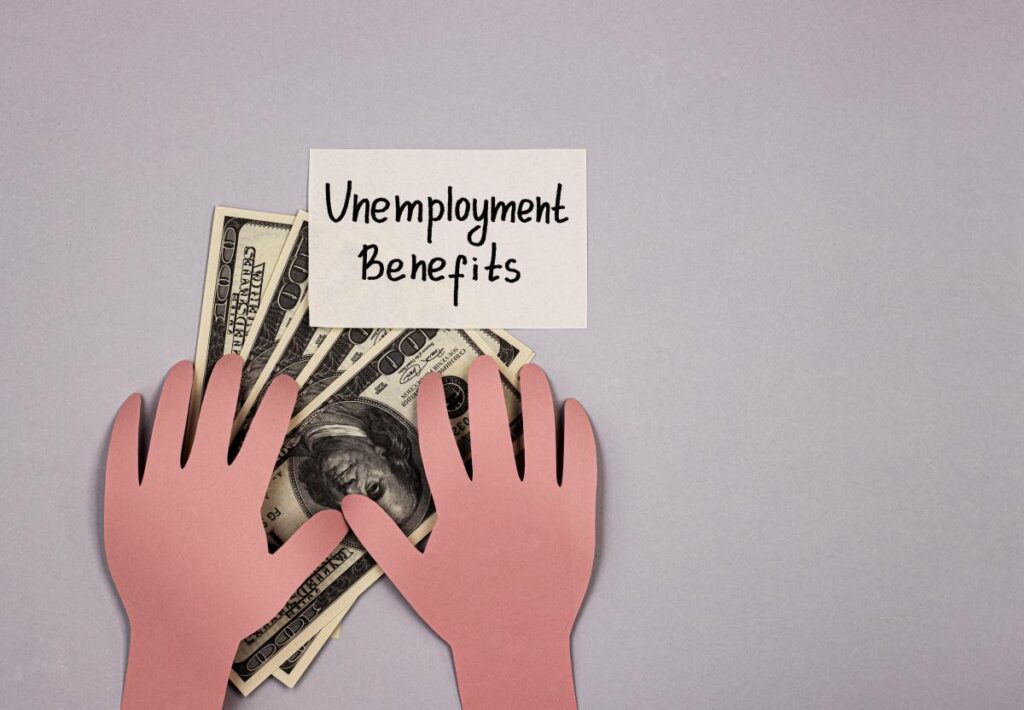Facing unemployment is challenging, especially when it isn’t your choice. With monthly bills and recurring expenses piling up, feeling overwhelmed is natural. But did you know there’s financial assistance available to you in the US? If you’re currently unemployed, you may be eligible for unemployment benefits and extended benefits.
In this guide, we’ll walk you through everything you need to know to apply. Discover the requirements, determine if you qualify, and learn how to navigate the application process. Let’s get started.

- What Is Unemployment Insurance?
- How Much Is Unemployment Insurance?
- How Long Can You Receive These Benefits?
- Who Is Eligible for Unemployment Benefit in the USA?
- How Long Do You Have to Wait to Start Receiving the Unemployed Insurance?
- How Do I File for Unemployment Insurance?
- What Are Extended Benefits?
- Getting Financial Assistance While You Are Looking for Work
What Is Unemployment Insurance?
Unemployment insurance, also known as unemployment benefits, is a joint state-federal program that provides temporary financial assistance to eligible workers who are unemployed through no fault of their own. The program aims to help these individuals meet their basic needs while they search for new employment.
This compensation is available through the Federal Unemployment Tax Act (FUTA) and employment agencies across 50 states. While the states facilitate the benefits, the Federal Department of Labor foots the administrative costs.
How Much Is Unemployment Insurance?
The unemployment benefits vary according to each state. The amount you receive is typically based on a percentage of your earnings over a recent 52-week period, up to a maximum amount set by the state. The average weekly unemployment benefit in the US was about $378 as of early 2024, but this amount varies significantly by state.
The money you receive is heavily influenced by your base period and the wages earned during this period. Below are examples of weekly benefit ranges in different states:
| State | Min Benefit ($) | Max Benefit ($) |
|---|---|---|
| California | 40 | 450 |
| New York | 104 | 504 |
| Texas | 69 | 521 |
| Florida | 32 | 275 |
What Is the Base Period?
The base period is the timeframe used to determine your eligibility and benefit amount. It generally consists of the first four of the last five completed calendar quarters before you file your claim. Some states offer an alternative base period if you do not qualify under the standard base period.
Use this free unemployment benefits calculator to estimate the amount you can receive in your State.
How Long Can You Receive These Benefits?
Unemployed workers in most states are eligible for up to 26 weeks of unemployment assistance (UI). Some states offer fewer weeks, and during times of high unemployment, federal programs may extend the duration. You must certify your eligibility each week to keep receiving unemployment benefits.
The federal government-sponsored EB program provides up to 13 additional weeks of unemployment benefits. However, states like Connecticut and New Mexico have volunteered to pay up to 7 extra weeks. This brings the total unemployed assistance to 39 weeks in most states or 46 weeks if you reside in Connecticut or New Mexico.

Who Is Eligible for Unemployment Benefit in the USA?
While each individual state sets the terms for eligibility, there are some general guidelines to receive unemployment benefits. In general, you qualify if you are available to work and actively seeking employment, and you fall into one of the following categories:
1. You are unemployed through no fault of your own
This typically happens in periods of lack of availability of work. If an employer ceases operation or you leave due to the risk of exposure to infectious diseases, you are eligible for the benefits. There’s a caveat to this requirement. You won’t be able to file a claim for either the unemployment insurance or the extended benefits if:
- You willingly resigned from your previous work.
- You were fired from your previous employment.
2. Meet wage and work requirements in the state
You must also meet the mandated threshold of the resident state for wages earned or time worked for the base period. For most states, the base period is the first 4 out of the last 5 calendar quarters complete before a claim is filed.
In any case, your resident state will perform background checks to confirm that you meet the requirements and other criteria, before receiving unemployment insurance. You can check the requirements of your own state program here.

How Long Do You Have to Wait to Start Receiving the Unemployed Insurance?
It typically takes 14 to 21 days to process before you receive your first stipend. Depending on the mode of filing your claim, you can always check for the status of your claim.
How Do I File for Unemployment Insurance?
To receive unemployment assistance, you need to first file a claim with the insurance program of your resident state. Depending on your state, you can file this claim either in person, via phone call, or online.
If your resident state is not the same in which you worked, the insurance agency in your resident state will provide details on how to file a claim with other states. You can look up your state unemployment insurance office here.
The documents and information required during filing include:
- Address of your previous employment
- Employment history (dates of onboarding and termination of the previous role)
- Social Security Number
- Valid proof of identity (such as a driver’s license or state ID)
What Are Extended Benefits?
As the name suggests, extended benefits (EB) include additional compensation for unemployed workers who have exhausted their regular unemployment insurance (UI). This typically happens in periods of high unemployment in which the federal government extends the insurance programs for additional weeks.
Remember that you can only obtain extended benefits after you have exhausted your basic unemployment benefits.
How Do You Qualify for Extended Benefits?
Not everyone who qualifies for unemployment insurance will get access to extended benefits. The state agency will inform you if you are eligible for the extended benefits during periods of high unemployment. However, in general, you must:
- Have exhausted the regular 26 weeks of unemployment assistance from the state.
- Not qualify for UI benefits in any other state.
- Be currently unemployed and actively in search of work.
- Have no disqualifications that might prevent you from getting access to EB from the state.
If you are disqualified from receiving UI benefits, you are automatically ineligible for EB. If you’re eligible for EB, the state agency will inform you through the usual channel.
Getting Financial Assistance While You Are Looking for Work
Unemployment benefits provide essential financial support during challenging times. To ensure you receive the assistance you need, check you meet the requirements and file your claim promptly. For more information on how to start your application, visit your state’s unemployment insurance website.



